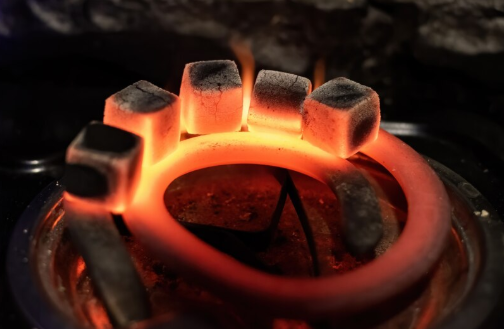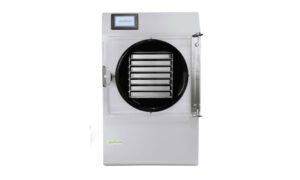When it comes to harsh working conditions, few materials hold up like tungsten carbide. It’s the go-to for industries that push tools and components to their limits. Think deep in the mines, under the ocean floor, or thousands of feet above ground in the aerospace sector. That kind of pressure, heat, and abrasion would destroy standard materials in no time. But tungsten carbide isn’t standard. It’s engineered to take a beating and keep going.
What Is Tungsten Carbide?
Tungsten carbide is a compound made of equal parts tungsten and carbon. On its own, tungsten is extremely strong and dense. When combined with carbon, the result is a material that’s almost as hard as diamond. It also resists heat, pressure, and wear better than nearly anything else on the market. It doesn’t corrode. It doesn’t deform under stress. And it lasts a long time, which is exactly what’s needed in high wear environments.
Why It Matters in Harsh Conditions
If you are drilling into rock, cutting metal, or working around extreme friction, you need something that won’t wear down or snap after a few hours. That’s where tungsten carbide comes in. Here’s what it brings to the table:
- Hardness: It’s one of the hardest materials used in manufacturing.
- Heat resistance: It stays stable at temps up to 2,800°F.
- Wear resistance: It can handle nonstop friction and impact without losing shape.
- Pressure resistance: It holds its form even under crushing forces.
These traits make it ideal for tools, parts, and equipment that work in punishing environments.
Where Tungsten Carbide Shines
Tungsten carbide isn’t just a lab material, it’s working every day in some of the toughest jobs out there. Let’s take a closer look at how it performs in a few high pressure industries.
Mining
Mining equipment is constantly exposed to hard rock, dirt, grit, and vibration. Drills, crushers, and excavation tools take a serious beating. If those parts fail, production stops. That means lost time and money. Tungsten carbide helps avoid that. You’ll find it in:
- Drill bits
- Cutting picks for continuous miners
- Wear plates and liners
- Conveyor belt scrapers
Because it’s so hard and resistant to abrasion, tools made with tungsten carbide can cut through rock without chipping or wearing down quickly. They stay sharper longer and need to be replaced less often, which cuts maintenance time and saves money.
Oil and Gas
In oilfields, the work doesn’t stop—rain, heat, sand, saltwater, it’s all part of the job. Drilling heads and valve parts are constantly under pressure, heat, and chemical exposure. Standard materials corrode and wear out fast. Tungsten carbide components are built for this. You’ll find them in:
- Drill bits and nozzles
- Valve seats
- Wear sleeves
- Downhole tools
These parts need to survive not just abrasion, but also high-speed contact with sand-laced fluids and sudden pressure changes. Carbide doesn’t flinch. It holds its form even in sour gas environments and deep-sea drilling setups.
Aerospace
Up in the air, every part counts. There’s no room for error in aerospace applications, especially where extreme speeds and temperatures come into play. Whether it’s jet engines or structural components, materials must be reliable under pressure and heat. Tungsten carbide plays a role in:
- Turbine engine components
- Bearings
- Nozzles and fuel system parts
- Precision machining tools used to shape aircraft-grade alloys
It keeps its hardness and shape even during repeated thermal cycles. That means more reliable parts and fewer replacements during inspections and repairs.
How It Handles Heat
Heat is a killer for most materials. It weakens steel, causes warping, and speeds up wear. But tungsten carbide stands firm even when temperatures climb past 1,000 degrees Fahrenheit. In some cases, it holds up past 2,800°F before losing its structure.
This makes it ideal for cutting tools that need to keep their edge under friction or components that face constant thermal cycling. Even in high speed cutting applications, where tools can glow red-hot, tungsten carbide holds its form and continues to perform.
It’s no wonder that manufacturers use carbide tooling to machine other heat-resistant alloys. It’s one of the few materials that can keep up.
Resistant to Wear and Abrasion
Wear resistance isn’t just about lasting longer. It’s also about holding shape, maintaining tolerances, and avoiding breakdowns in the field. When surfaces wear unevenly, it can cause vibration, misalignment, or outright failure.
That’s why so many wear parts are made with tungsten carbide. It doesn’t just survive the contact, it resists deformation, galling, and fatigue even under repetitive stress. This is critical for parts like:
- Pump seals
- Nozzles and spray tips
- Bearings
- Cutting inserts
Whether it’s scraping rock or spraying chemicals, these parts stay in shape far longer than traditional metals.
Carbide Doesn’t Crack
Pressure can warp, bend, and crack lesser materials. In deep mining or oil drilling operations, pressure builds from all sides. Components need to resist both static and dynamic loads.
Tungsten carbide handles compressive stress better than just about anything. In fact, it has a compressive strength of more than 600,000 pounds per square inch. That makes it ideal for situations where components are squeezed, compacted, or impacted repeatedly. Even when it’s used in small parts like valve seats or punches, it doesn’t give way.
What About Cost?
Tungsten carbide is more expensive up front than basic steel or aluminum. Because carbide components last longer, you buy fewer replacements. You also reduce downtime from tool changes, machine recalibration, or part failure. In industries where every minute counts, that’s worth a lot. It’s also worth noting that tungsten carbide can be recycled. Many companies reclaim old tools and reprocess the material, reducing waste and lowering long-term costs.
Machining and Manufacturing Challenges
Working with tungsten carbide isn’t like working with steel. Because of its hardness, it can’t be shaped with normal cutting tools. It has to be ground with diamond wheels or shaped using specialized presses and sintering processes. That means it’s not a quick turn material. It takes more effort and skill to produce quality components. But the payoff is performance.
Why It Is a Long Term Investment
When you are working in extreme environments, you need tools and parts you can trust. Tungsten carbide offers peace of mind. It doesn’t bend, chip, or give up under stress.
Whether you’re managing a fleet of mining equipment, running a drill crew offshore, or sourcing reliable parts for aviation maintenance, using tungsten carbide where it counts can reduce failures, extend service intervals, and improve performance across the board.
Final Thoughts
Tungsten carbide isn’t new, but its role in modern industry is bigger than ever. As work environments grow more demanding, the need for materials that can handle heat, abrasion, and pressure continues to rise. And when other materials fall short, carbide keeps working.
If you are in an industry that can’t afford breakdowns, it might be time to look more closely at what a tungsten carbide manufacturer can do for you. Not every part needs it, but the ones that do shouldn’t settle for anything less.



































